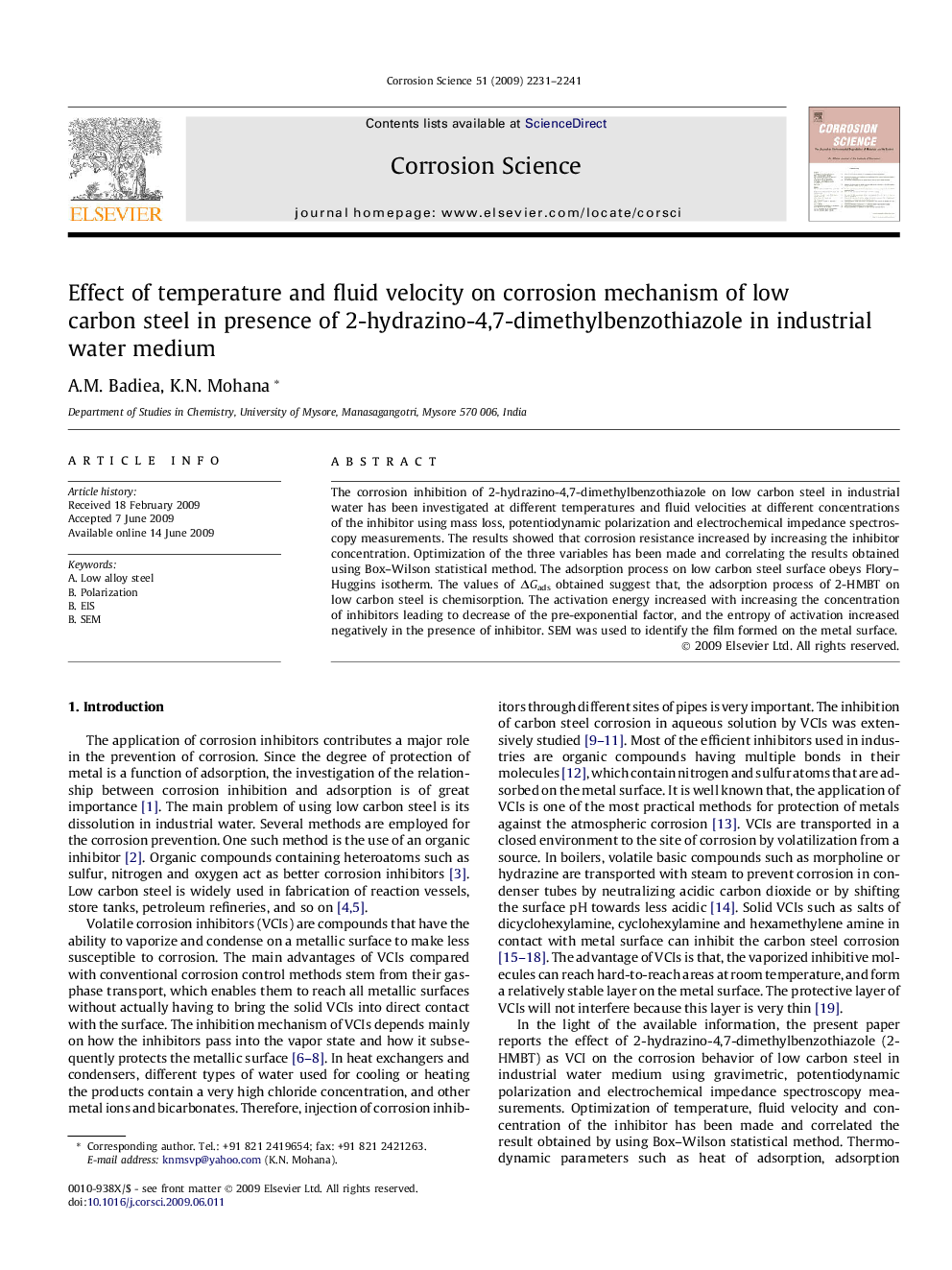| Article ID | Journal | Published Year | Pages | File Type |
|---|---|---|---|---|
| 1470931 | Corrosion Science | 2009 | 11 Pages |
The corrosion inhibition of 2-hydrazino-4,7-dimethylbenzothiazole on low carbon steel in industrial water has been investigated at different temperatures and fluid velocities at different concentrations of the inhibitor using mass loss, potentiodynamic polarization and electrochemical impedance spectroscopy measurements. The results showed that corrosion resistance increased by increasing the inhibitor concentration. Optimization of the three variables has been made and correlating the results obtained using Box–Wilson statistical method. The adsorption process on low carbon steel surface obeys Flory–Huggins isotherm. The values of ΔGads obtained suggest that, the adsorption process of 2-HMBT on low carbon steel is chemisorption. The activation energy increased with increasing the concentration of inhibitors leading to decrease of the pre-exponential factor, and the entropy of activation increased negatively in the presence of inhibitor. SEM was used to identify the film formed on the metal surface.
